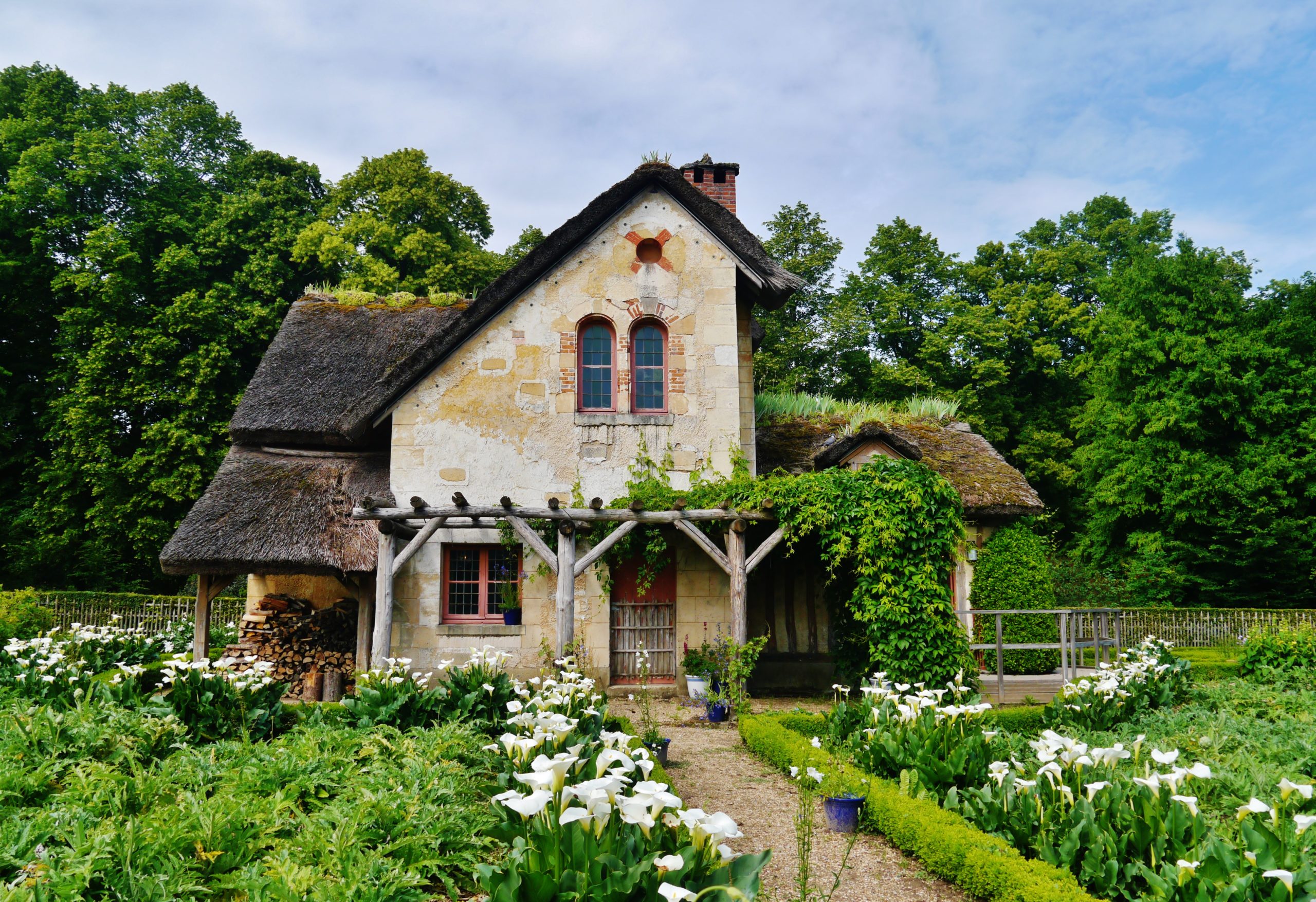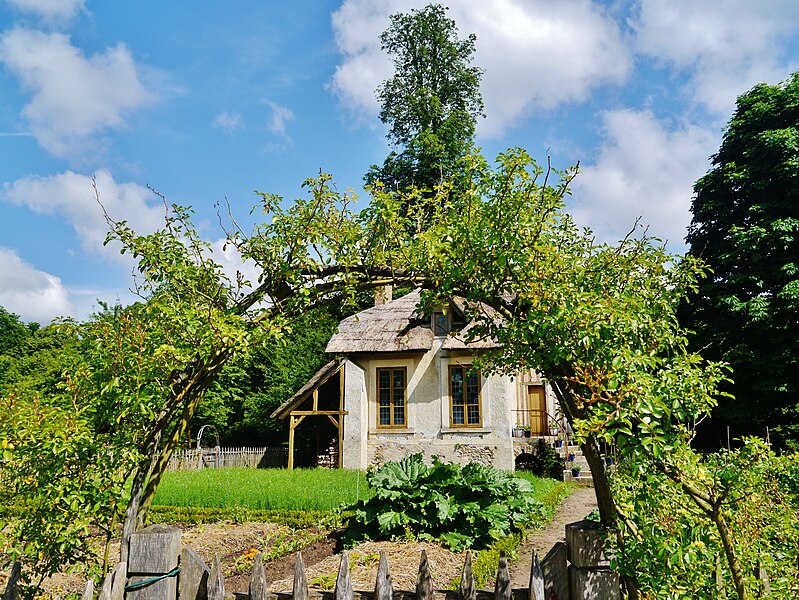For all the grandeur that the Palace of Versailles has to offer there is something much more quaint and rustic, that appeals to my beauty-seeking soul. It is Marie Antoinette’s Hamlet. The Norman-styled Hamlet, Hameau de la Reine, was designed by architect Richard Mique for Marie Antoinette between 1873 and 1787. It was a place for her to escape the daily rigors of court life.

Marie Antoinette’s Hamlet
There are a total of eleven houses that surround the big lake. Five of the buildings were regularly used by the Queen and her guests. They included the Queen’s house, billiard room, boudoir, mill, and refreshments dairy. The remaining four homes were for the working staff. They included the farm and its annexes, the barn, the dovecote, and the preparation dairy. The farm was located just outside the village and contained eight cows and a bull, ten goats, and several pigeons.
Each house came with its own complete garden. Crops such as cabbage, cauliflower, and artichokes were grown. Most of the gardens were surrounded by hedges and chestnut trees. Small orchards of apple trees and cherry trees were also planted.

Climbing plants such as roses, grapes, and wisteria covered the walls of the houses and on arbors to create shade on certain paths.

The Malborough Tower was named for the Duke of Marlborough. It was the point of departure for boat rides or fishing outings to catch pike or carp.

The Queen’s house is the most important building located in the hamlet. It is comprised of two separate buildings joined by a wooden gallery. It is decorated with white and blue earthenware flowerpots with Marie-Antoinette’s monogram. The ground floor featured the dining and billiard room. The first floor contained a large living room, a small living room, a Chinese room, and a private apartment.
The Queen’s small house, known as the Boudoir, features a thatched roof, a lean-to, and a charming staircase. The back is surrounded by a closed garden.

Moulin
The Moulin was designed as a mill. However, the structure is purely decorative. Although it was on occasion used as a laundry. The wheel of the mill is powered by a stream from the Grand Lake.

All of the cows, goats, and sheep were brought to the farm from Switzerland. Various cheeses and creams were manufactured in the Preparation Dairy, which was destroyed under the First Empire. It was located across from the Refreshments Dairy which thankfully, still stands.

As to the hamlet’s historical significance, it was here that guards found the Queen and informed her she would be imprisoned and tried for treason. Sadly, the trial did not end well for her or her family.
Queen Marie Antoinette of France and two of her Children Walking in The Park of Trianon, Adolf Ulrik Wertmüller in 1785.
Happily, her vision of simple beauty lives on.

Let us visit Le Petit Trianon next.
Laura